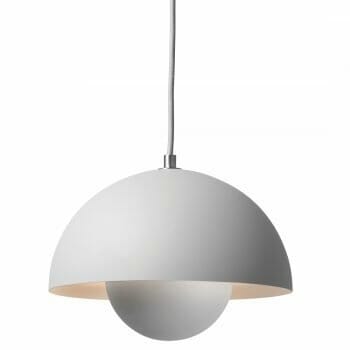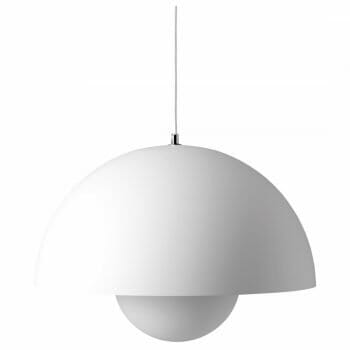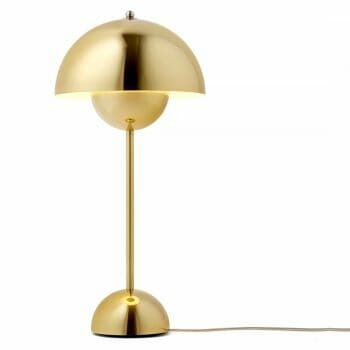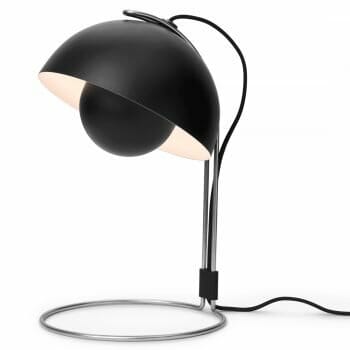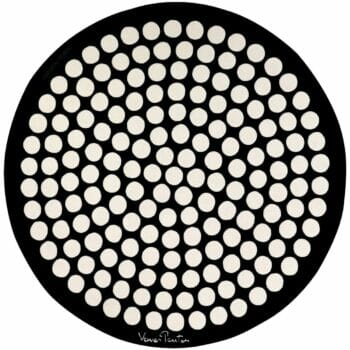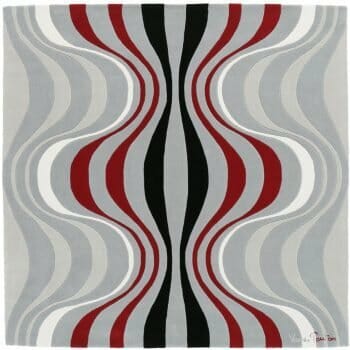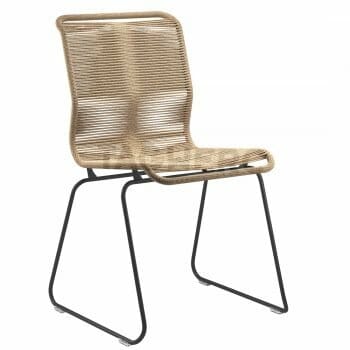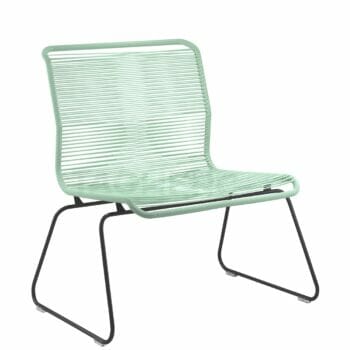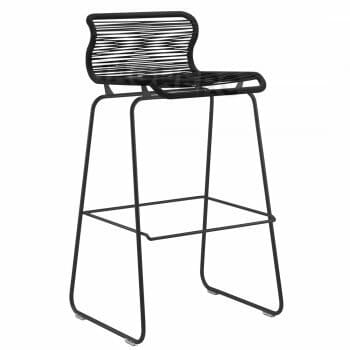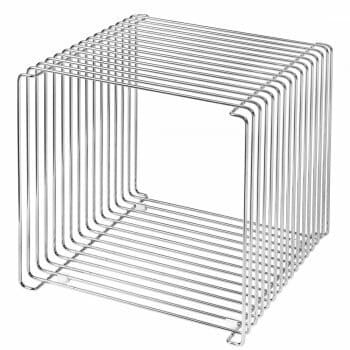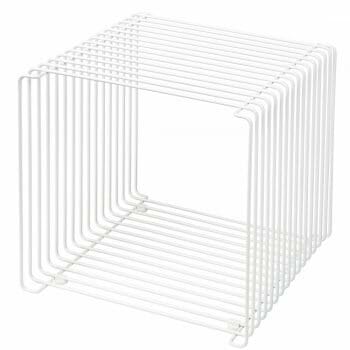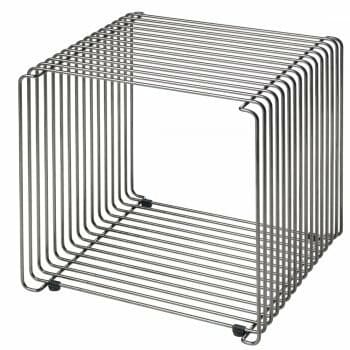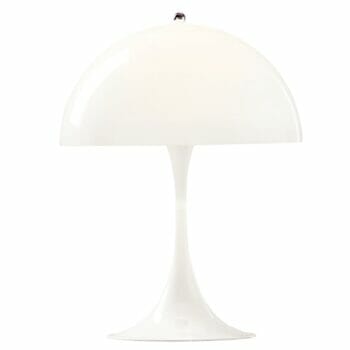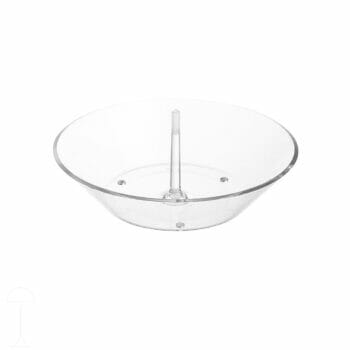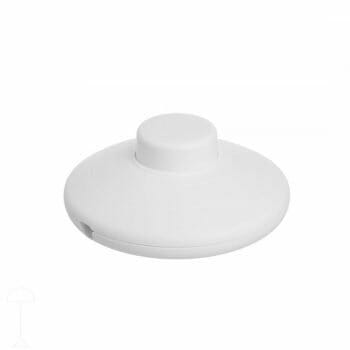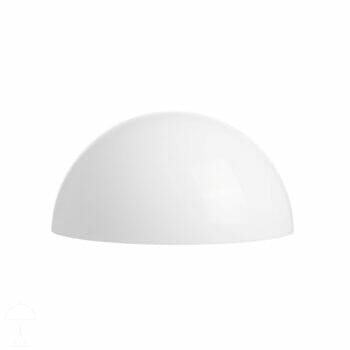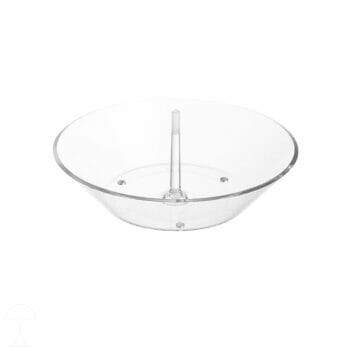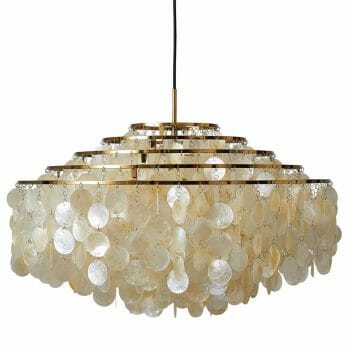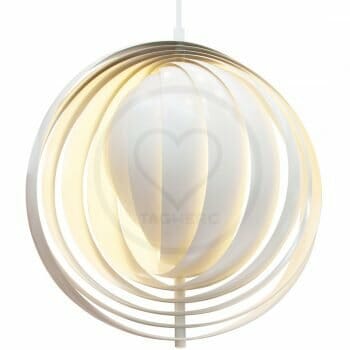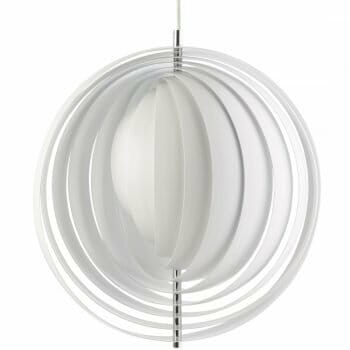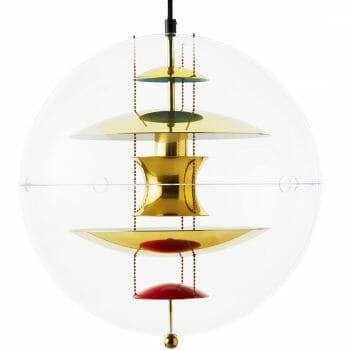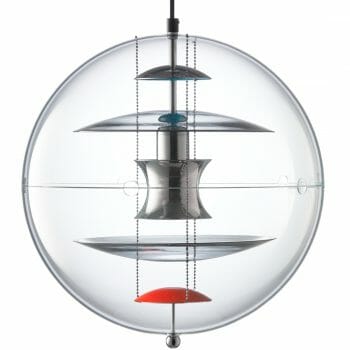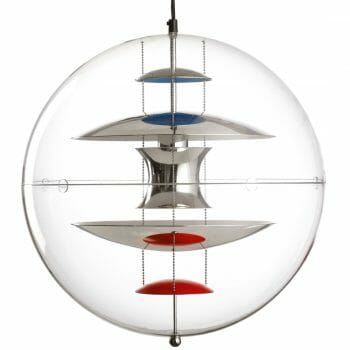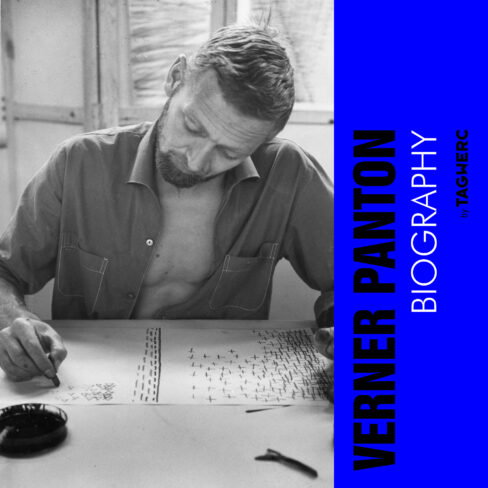
Biography of Verner Panton
Beginning and education
Verner Panton sees on the 13th of February, 1926 in Brahesborg-Gamtofte on the island Fünen in Denmark the light of the world. At the age of 18 years the Dane moves to Odense. There he joins the military for two years. Parallely in addition he visits the Technical School, also in Odense, from 1944 to 1947. Following Verner Panton studies architecture at the Royal Academy of Arts in Copenhagen (in 1947-1951) and begins to occupy himself with colour psychologie. During the study Tove Kemp crosses his way. The stepdaughter of the architect and designer Poul Henningsen marries Panton in 1950. Nevertheless, the marriage fails after only one year. Their common son passes away early. What remains is the friendship to Poul Henningsen which remains up to his death in 1967 Panton’s mentor.
Teaching years at Jacobsen
Already at the end of the study in 1950 Verner Panton signs for two years in the architecture and design office of famous Arne Jacobsen which he got to know by his father-in-law. Entrusts with furniture design, among the rest, he sketches the Antn, one of the best known chairs Jacobsens’, with. Years later he will say about this not always easy time: “The older I become, the more respect I get for Arne Jacobsen, although I have another view in many things. If one considers all what Arne Jacobsen has accomplished in numerous areas, there is nobody in the world which can hit him. Of course his skill was accompanied by talent, energy, economy and luck. And maybe everything was a little bit too clean. But I have never learnt so much from somebody like from Arne Jacobsen. Also unbeing sure and never giving up.”
Office in the Bulli
In a VW van converted to a sign office Verner Panton moves three years through Europe accompanied by his former fellow student Hans Ove Barfoed. In this manner he is self-sufficient and is able to write down the manifold impressions directly. Numerous draughts originate, for the creation of buildings and interior arrangements. Besides, Panton dives into the international design scene. He meets colleague, manufacturers and traders.
Start with chairs
Fritz Hansen, the famous Danish furniture manufacturer, builds the first, serial produced pieces of furniture of Verner Panton. In 1955 Bachelor Chair and Tivoli Chair come on the market. A divisible small weekend house which can be also used as a garage is produced in 1957 in small series. Verner Panton will rework this draught in 1976 and 1979 twice. As the first big order the designer takes over the removal and the creation of the Kom-igen Inn on property Langeso Park on his home island Fünen. First of all it is his father who pursues the bar as a tenant and has recognised the potential of his son and wants to promote. With five red tones co-ordinated to each other Verner Panton forms the interior. Also the clothing of the service staff is considered in the total concept. In 1958 a novelty. The seats consist of Tivoli Chair and Cone Chair. The last one is presented to the public for the first time. As a part of the Series K (Kraemmerhusstole) the seat causes big sensation and is produced in 1959, the following year, by the Danish company Plus-linje. In the same year the cooperation with the Danish company Unika Væv for textiles and Louis Poulsen for lights begin.
Plastic and multidimensionality
In 1960 there originate the first inflatable seats in furniture history. Verner Panton had dealt with them already in 1954 during his European travelling. Made of clear plastic, they permit to the viewer a look in their inside. Both, the material seemless plastic, as well as the play with the transparency, becomes typical for the design of Panton.
The big love
On vacation on Tenerife, in 1962, Verner Panton meets Marianne Pherson-Oertenheim. They fall in love and marry two years later in Basel. The Swede by birth already has a daughter, Cecilia Oertenheim, from her first marriage. Two years after the wedding the common daughter Carin is born. The couple seems to have searched an found each other. They will stay together up to the death of Panton. Marianne and Verner travel a lot and keep in Basel, nevertheless, her base. In 1972 they buy the summer cottage Kullavej in Hornbaek, Denmark, which they deliver in 1993 again. A year later the Pantons cover an apartment in the city of Copenhagen, as their second residence. Marianne is not only Verners lifelong companion, she is also active as an ambassadress and manager of her husband what pleases Verner very much. Both seem to complete each other perfectly. After the death of her husband, Marianne leaves the common flat in Basel and gives up also the domicile in Copenhagen in 1999. Marianne Panton: “After Verner’s death, I had very quick the need to leave our old common flat. It was too big for me. In this new flat I had to appear first to myself and my future without Verner. I did not know at all how it should go on.”
The Swiss chapter
Their Swiss chapter begins when the Pantons resettle from Cannes to Basel in 1963. Willi Fehlbaum, boss of Vitra at that time, had agreed to produce the Panton Chair. The move was necessary to make the prototypes of the chair fit for the serial production. One could assume that Panton had had to find a manufacturer in Scandinavia easyly. Particularly Scandinavian Design boomed in the 50s and 60s. “Nevertheless, in Scandinavia the furniture manufacturers always let us know that the production of this chair is not possible. However, Verner believed in it, never dropped his idea, and found like-minded people at Vitra”, says wife Marianne Panton. There pass other years until the Panton Chair Classic was able to be sold in 1967.
German value work
Two years before it, in 1965, the Gebrüder Thonet AG bring out the S Chair. The German furniture smithery has specialised in manufacturing pieces of furniture – particularly chairs – since beginning of the 19th century. While the traditional joiner wins an oscillation by sawing, planing or carving from the full block, Thonet achieves this by bending, that means by distortion of the stiff wood. Produced of layer wood, Verner Panton had thought up the batch chair already in 1956. In the same year the S Chair finally appears, he begins with the draught of a Residential Scenery. The system furniture, with square plan, are made by the Alfred Kill GmbH and the Metzeler-Schaum GmbH and are brought by the Kaufhof to the customers in 1967. The module furniture, with a Perlon covering in the colours brown, orange, red, yellow, blue and turquoise, offer nearly unlimited possibilities of combination. – A revolution at the furnishing market.
Visionary worlds
After a little while (in 1968/1969) Verner Panton once again puts a landmark in furniture design with the Living Tower. The skulptural seat which consists of two elements enables a total of four seat places. Also end of the 60s the designer conceives the exhibition on the Drahlon ship (1968) for the chemical company Bayer AG on occasion of the Cologne Furniture Fair. Till the middle of the 70s Bayer rents a Rhine steamboat and allows to furnish it by contemporary designers. Besides, it is basically about advertisement for plastic textiles like Drahlon. By suggestion of Verner Panton the Drahlon ship is renamed Visiona 0. The Visiona 2, in 1970, also becomes the showroom of Panton. As well as the new built Spiegel editorial staff house in Hamburg (1969). Till this day the canteen is received in the original state. This makes this place a unique document of the design history. Just as the Circus Building of Copenhagen, built in 1885 in whose renovation he is involved as a light and space adviser in 1984.
Colours and forms in flow
In the 70s Verner Panton fully plunges into the world of colours and forms. Strengthened by success he ventures incredibly avant-garde draughts. The Visiona 2 to resembles a creative fireworks. Furniture, lights, wall panelling and textiles – Verner Panton never limit himself only to one single object, but puts it always in a context, incorporates the whole space into his creation. The best examples: the Varna Palace in Arhus / Denmark (1971) and his private Villa in Binningen/Switzerland which he models in 1972. Today the Living Sculpture dominating the sitting room is shown to the public in the museum Centre Pompidou in Paris / France. Not to forget the arrangement of the new Gruner & Jahr publishing house in Hamburg (1973). A mission which was similarly extensive like the inside creation of the Spiegel building four years before. Panton’s preference for strong colours and geometrical forms are reflected in his extensive work as a textile designer. Thus in the middle of the 70s a number of textiles with expressive print develop. The collections Grande, Grafica, Casa or Fiori and Castello (all in 1975) are some examples. They are made by the company Mira-X AG in Switzerland with which Panton works together since 1971. Also in the 70th the cooperation with the Danish manufacturer Fritz Hansen for pieces of furniture like the System 1-2-3 (1977) begins.
The Space Age style
Also in 1977 the Danish manufacturer Louis Poulsen brings out the light family VP Europe developed by Panton. The foot reminds of the Panthella already designed in 1971. The lampshade exists of mouth-blown glass. In spite of the appealing form the lamps have something extraterestical. Substantially spaciger seems to be the Panto developed in the same year. This lamp bases on the VP Globe, already stamped into the design orbit end of 60s / beginning of 70s. Also the slope light Ellipse Lamp of 1971 and above all the Ufo of 1975 have – as the names already let assume – a strong creation relation to the space. Also daring, because of never beeing there before: With the wall and ceiling light Ring Lamp (1970) and Spy (1971) the Dane lined whole rooms. “The principal purpose of my work is to challenge people to use their imagination”, according to Verner Panton, eager for technology. This might not be difficult for those, who have a look at such charismatic luminous objects.
Fame and honour
So much creativity and creating urge remains not possibly unnoticed. In 1979 he receives the Møbelprisen in his native country Denmark. In the same year the Swiss Furniture Fair honours him with the special exhibition Pantorama. It impresses through monochrome produced rooms with object character. In the middle of the Blue Room, for example, Panton places several Living Tower, in the same colour, of course. Above that float VP Globe lights. Between 1981 and 1986 the designer receives five times the design price Deutsche Auswahl. His splendid play with colours, forms and functions becomes obvious with the renovation of the Copenhagen Circus Building in 1984 once again. Here Verner Panton consults in light and colour questions. In Offenbach he transmits his idealism as a visiting professor in the college for creation.
Development of the ergonomics
One could call the 90s absolutely the epoch of the chair development in which Verner Panton is decisively involved. In 1993/94 he sketches for the Swedish furniture house Ikea Vilbert, constructed out of four records screwed together with each other. Together with the Vereinigten Spezialmöbelfabriken, called VS-Möbel, Panton works between 1993 and 1998 on the improvement of the ergonomics of chairs. The name Pantoflex bundled up the won experiences. On the base of dynamic sitting and for different areas of application the chairs PantoSwing, PantoMove, PantoFour and PantoStack develop.
Life work and the last exhibition
At the height of his creating, the Danish queen Margrete lends the Cross of Honour of the Order of the Dannebrog (Dannebrogordenens Hæderstegn) for his life work to the designer. Also in 1998 Panton plans the exhibition Light and Colour. The retrospective should be opened on the 17th of September in the Trapholt Museum in the Danish Kolding. Briefly before it, on the 5th of September, Verner Panton is torn from life. He dies at the age of 72 years in Kopennhagen.
Panton’s punshline
“The people become sour if one likes colours. They do the same on person with imagination. The most want, what they are used to. But I must exaggerate to bring my punshline over”, Verner Panton expressed once. This may often have led to the fact that Panton Design was classified as not beeing timeless. Nevertheless, his young and timeless draughts and the big interest in them prove the opposite.

